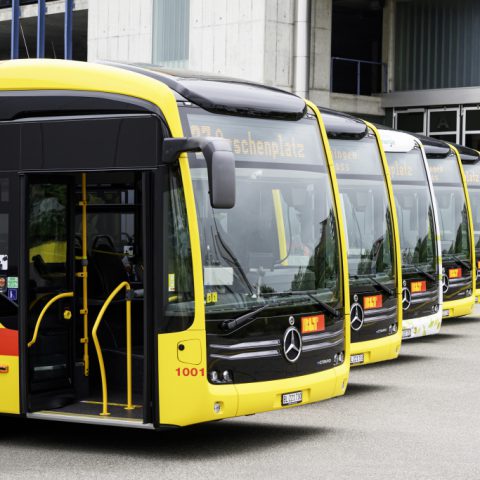Daimler Truck results 2021: 20% more truck and buses sold worldwide compared to 2020
Daimler Truck released today its 2021 results. 20% more trucks and buses have been sold worldwide in 2021 compared to prior-year level (378,300 units), the company released today during an online press conference. During the Q&A session it was also mentioned that they are not bringing buses at IAA Transportation 2022. Daimler Truck increased its […]

Daimler Truck released today its 2021 results. 20% more trucks and buses have been sold worldwide in 2021 compared to prior-year level (378,300 units), the company released today during an online press conference. During the Q&A session it was also mentioned that they are not bringing buses at IAA Transportation 2022.
Daimler Truck increased its revenue by 10% in 2021 compared to 2020. That’s what the global group communicated during today’s online press conference, the first since the spin-off from the car and van segment. Most of the focus has actually been on the truck segment.
Daimler Truck has the target of selling only carbon-free vehicles in Europe, North America and Japan by 2039.
Daimler Truck 2021 results: 20% more truck and buses sold
Of course, the quite positive figures recorded in 2021 (compared to 2020, which was a very tricky year, considering the pandemic outbursts all over the world) are affected by the uncertainties coming from the ongoing semiconductor shortage on a global level, the evolution of the pandemic, as well as the consequences of the Russian invasion of Ukraine, which started exactly one month ago.
last year Daimler Truck benefitted from an overall economic recovery in the most important commercial vehicle sales markets in the financial year 2021 and significantly increased its unit sales, revenue and net profit. With 455,400 units, 20% more trucks and buses have been sold worldwide in 2021 compared to prior-year level (378,300 units). The company gained advantage from a recovery in its most important markets, especially in the first half of 2021. While demand remained strong across core markets during the second half, supply constraints slowed production and limited volume growth especially for heavy duty vehicles in North America and Europe.
The ongoing electrification strategy
Quoting from the group’s press note, «the company’s revenue increased to € 39,8 billion in 2021 (+ 10% compared to previous year: € 36,0 billion). Supported by a very strong demand environment and driven by all segments Daimler Truck’s incoming orders for 2021 in the industrial business have mounted to 590,000 units, a plus of 37% compared to prior year (430,500 units). Even more important, 2021 also showed a favorable development for earnings and Return on Sales (RoS) driven by strong sales, an improved net pricing and cost reduction measures. The adjusted EBIT (earnings before interests and taxes) significantly rose to € 2,552 million (previous year: € 657 million). The adjusted RoS of the Industrial Business in 2021 was at 6.1% versus previous year’s RoS adjusted of 1.9%. The Free Cash flow of the Industrial Business amounted to € 1,556 million in the reporting year (2020: € 1,781 million). All in all, Daimler Truck delivered on the targets for cost reduction and margin improvement. Simultaneously Daimler Truck faced headwinds by the effect that the supply chain constrains predominantly affected the Group’s highly profitable truck portfolio in North America and Europe».
Truck electrification in the spotlight
The Q&A sessions of today’s online press conference saw several questions related to alternative tractions in the truck field, as Daimler Truck will see the advent of the eEconic this year, following the start of serial production of the eActros in 2021. CEO Martin Daum confirmed that the path towards electrification will not be affected by the current international issues. He did not release any figure on orders and sales achieved so far, but said that Daimler wants to «at least triple» the number of electric vehicles (including buses) sold in 2022 compared to 2021. Furthermore, the company’s focus is also on hydrogen development, with the cellcentric project and above all the H2 truck, whose serial production is scheduled in 2027.
Daimler Truck «emphasized its ambition to reduce R&D and CapEx (capital expenditures) by 15% until 2025 compared to the 2019 level despite the need for increased investment in ZEV (zero emission vehicle) technologies. Consequently the company strictly applied its capital allocation process focusing on future returns on capital as well as transformation ambitions. In 2021, Daimler Truck already reduced our R&D and CapEx by 18% compared to 2019. Reduction of ICE (internal combustion engine) related investments had a head start compared to the required ramp-up of ZEV investments, hence the 15% reduction ambition remains valid for 2025».







